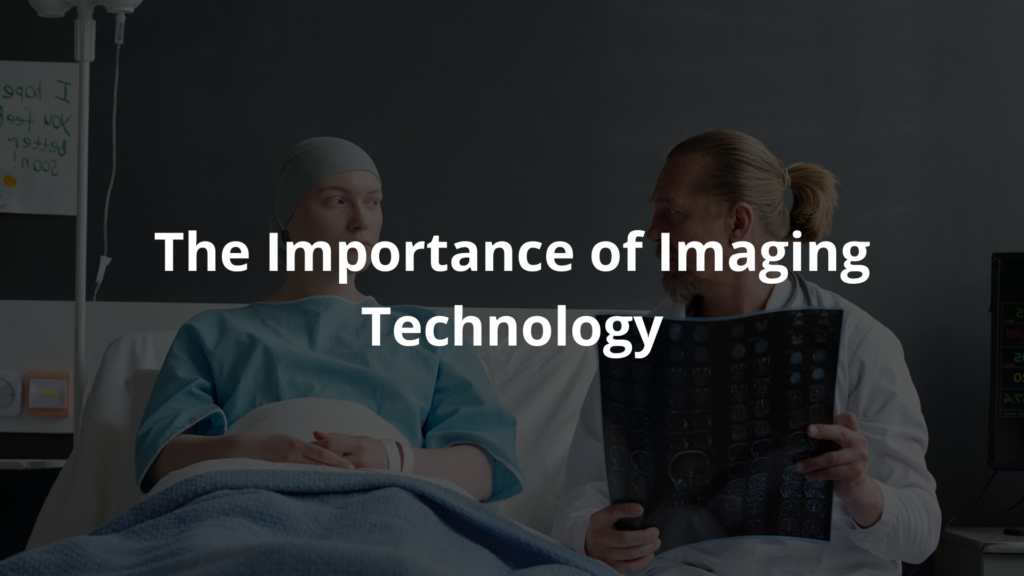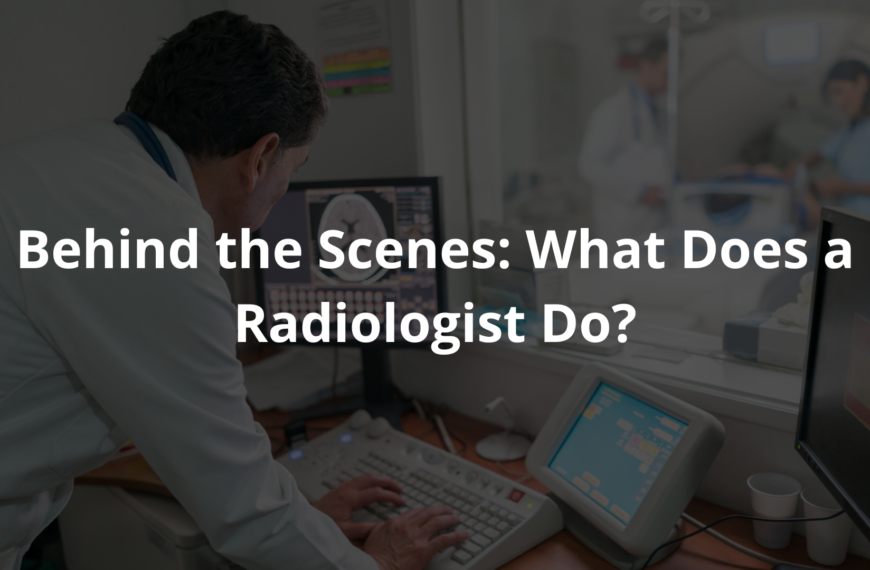Radiologists in Australia help doctors find and treat issues using advanced medical imaging. Discover their role and why they’re so important.
Radiologists in Australia have a vital role in healthcare. They use advanced imaging techniques, like X-rays, CT scans, and MRIs, to create pictures of patients’ insides. These images are essential for doctors to diagnose illnesses and plan treatments.
It’s not just about snapping photos; radiologists interpret complex images to help doctors understand what’s happening inside a patient’s body. If you’re interested in a career in this field or just want to learn more about what radiologists do, keep reading! Their work is crucial for patient care and safety in Australia’s healthcare system.
Key Takeaway
- Radiologists need a medical degree and special training to interpret medical images.
- They help doctors diagnose and treat medical conditions, making their work crucial.
- Job opportunities for radiologists are growing in different regions of Australia.
What Do Radiologists Do?
In Australia, radiologists are like detectives, but instead of solving crimes, they focus on uncovering health issues(1). Using medical imaging tools like X-rays, CT scans, MRIs, and ultrasounds, they help doctors understand what’s happening inside the body. These images are vital, as about 80% of medical decisions rely on their findings.
Radiologists don’t work alone—they are integral members of a broader healthcare team that includes doctors, nurses, and other professionals. Once they interpret medical images, radiologists share their findings to help determine the best treatment plan. This collaborative approach ensures that patients receive care tailored to their specific needs.
As Australia’s population ages, demand for diagnostic imaging is growing. Radiologists and radiologic technicians are busier than ever, ensuring patients receive the right diagnosis and treatment. Their dedication to staying current with advancements ensures they provide the best care possible, helping patients feel confident and supported during uncertain times.
How Do You Become a Radiologist?
Source: Emergency Focus.
Becoming a radiologist in Australia requires dedication, time, and effort. The first step is earning a bachelor’s degree, typically in a science-related field, which takes about four to six years depending on the program. This degree serves as the foundation for future medical training.
Next comes medical school, a four-year program where students delve deeper into the field of medicine. During this stage, they gain essential knowledge about diagnosing and treating various illnesses. Upon graduating from medical school, they officially become doctors, but the journey to becoming a radiologist isn’t over yet.
After completing medical school, aspiring radiologists must undertake a radiology residency. This is an intensive five-year program where they receive specialised training in interpreting medical images such as X-rays, CT scans, MRIs, and ultrasounds.
During residency, they also work closely with patients, learning how to use imaging techniques to assist in diagnosing and managing illnesses. The final step in becoming a radiologist is passing the certification exams conducted by the Royal Australian and New Zealand College of Radiologists (RANZCR).
Work Life Balance
Radiologists usually work full-time, which means about 40 hours a week(2). But what’s kind of cool is how they can still keep a good balance between their work and personal life. They’ve got options. Some work in private practices, others in big public hospitals, and a few even choose to be locum radiologists. Locum radiologists are like fill-ins—they step in when other doctors can’t be there.
This kind of flexibility is a big deal, especially in busy places like Sydney, Melbourne, or the Gold Coast. Picture a radiologist who loves spending time with their family or maybe wants to travel. They can pick jobs that match what they need.
Say there’s a radiologist who wants to go on a long holiday or be there for their kids’ school play. They can find work that lets them do that. It’s a way to stay happy and healthy while still doing the important job of helping patients understand their medical images and make good health decisions.
The Importance of Imaging Technology

Radiologists are often compared to detectives, but instead of magnifying glasses, they use advanced machines like MRI (Magnetic Resonance Imaging) and CT (Computed Tomography) scanners. These tools create detailed images of the human body, helping radiologists understand what’s happening beneath the skin. Think of it like a map, but instead of streets and landmarks, the map shows organs, bones, and tissues.
Radiologists rarely meet patients face-to-face, but their work is indispensable. They analyse images to help doctors diagnose conditions, plan treatments, and monitor progress. Whether it’s identifying a broken bone, detecting early signs of disease, or evaluating how well a treatment is working, radiologists are always in the background, ensuring healthcare teams have the information they need.
Behind every scan is a radiologist working hard to interpret the images and provide crucial information to the healthcare team. Their dedication to precision and detail helps doctors make informed decisions, ultimately keeping patients healthier and more confident in their care.
Interventional Radiology: A Special Field
Interventional radiology is like a high-tech toolbox for doctors, offering ways to treat problems inside the body without the need for major surgeries. It’s a specialised branch of radiology that uses imaging techniques, such as X-rays, CT scans, or ultrasounds, to guide doctors during treatments. Unlike traditional surgeries, interventional radiology focuses on small, precise procedures that are minimally invasive.
One of the biggest benefits of interventional radiology is that it’s less invasive, meaning patients experience less pain and recover much faster(3). Many procedures allow people to return home the same day or after a short hospital stay, avoiding the long recovery times often associated with traditional surgeries.
Imaging tools like CT scans and ultrasounds also make the process safer by allowing the doctor to see exactly what they’re doing. It’s like using a GPS to navigate inside the body, ensuring treatments are both accurate and effective. This precision is particularly helpful for managing conditions such as blocked blood vessels, tumours, or fluid build-up.
Job Opportunities in Australia

Medical imaging is crucial in healthcare, helping doctors see what’s happening inside the body to diagnose illnesses and plan treatments. In Australia, as the population grows and ages, the demand for radiologists is higher than ever. These specialists interpret X-rays, CT scans, MRIs, and more to provide critical information for medical decisions. Without radiologists, diagnosing and managing health conditions would be far more challenging.
With increasing reliance on imaging, radiologists have become essential in modern healthcare. Their expertise supports doctors in identifying everything from broken bones to complex diseases, ensuring patients receive timely and accurate care.
The rising demand for radiologists has created abundant job opportunities across the country. Whether you prefer the fast-paced environment of cities like Sydney or Melbourne or the quieter charm of regional areas like Hervey Bay, there’s a place for everyone. Smaller communities often offer a close-knit atmosphere, which can be rewarding both professionally and personally.
Radiologists can choose from various work settings, including large hospitals, outpatient clinics, or private practices.
Continuing Education
For radiologists, earning their qualifications is just the beginning. Their career is like climbing an endless staircase, with each step offering new knowledge and skills. Whether it’s mastering a new imaging machine, learning advanced techniques, or understanding the latest medical research, radiologists are always improving their expertise.
This ongoing education involves attending workshops, training sessions, and reading medical journals. It’s not optional—it’s essential. Medical imaging is constantly evolving, with advancements in technology and techniques transforming the field. By staying updated, radiologists ensure they can provide the highest level of care for their patients.
Radiologists are not just doctors—they’re lifelong students. They have to be, as medicine never stands still. From exploring new imaging tools to studying advanced diagnostic techniques, they dedicate countless hours to learning. This commitment ensures they can offer their patients the best and most up-to-date care possible.
Collaborating with Other Doctors
Radiologists are like detectives in the medical world, but instead of magnifying glasses, they use advanced imaging tools like X-rays, MRIs, and CT scans. While it’s true they spend a lot of time analysing images, they are far from working alone. Radiologists are part of a larger healthcare team, collaborating with surgeons, oncologists, and general practitioners to diagnose and treat patients. Teamwork is at the heart of their role.
Radiologists do more than identify problems; they also play an active role in guiding treatments. Interventional radiology is a prime example, where imaging is used to assist with procedures like placing stents, draining fluid, or even treating tumours. In these cases, radiologists step out from behind the screen and directly help patients, combining their diagnostic skills with hands-on care.
Their role ensures that every member of the healthcare team has the precise information they need to do their job effectively. So, next time you see someone in scrubs with a stack of images, remember—they might just be solving a medical mystery, helping to ensure the best possible outcomes for patients.
Patient Interaction
Radiologists often work behind the scenes in hospitals, reviewing images and making diagnoses. While most of their work happens without direct patient interaction, there are times when they do meet with patients. In these meetings, radiologists may explain what has been found in a scan or discuss possible treatment options. It’s like a coach giving the team feedback after a match—sharing what they’ve learned and helping to map out the next steps for care.
While radiologists work behind the scenes, patients most often meet radiologic technicians, also known as radiographers. These are the friendly faces who greet patients when they come in for an X-ray, CT scan, or MRI. Radiologic technicians explain the process to patients, ensuring they know what to expect. They help patients get into the right position and make sure they’re comfortable during the procedure.
Radiologic technicians play a crucial role in patient care. While they operate imaging machines, their job is also about offering emotional support and building trust. When patients feel comfortable and know what to expect, the entire process becomes less intimidating. This helps patients feel more at ease and allows them to ask questions or express concerns.
FAQ
What are the typical work hours for radiologists in Australia?
Radiologists in Australia typically work full-time hours, around 38-40 hours per week. However, the hours can vary depending on the specific work setting, such as private practice, public hospitals, or imaging clinics. Some radiologists may work longer hours, especially those in busy urban areas like Sydney, Melbourne, or Perth.
What are the job growth prospects for radiologists in Australia?
The job growth for radiologists in Australia is quite strong, driven by the increasing demand for medical imaging services and the ageing population. The medical field, including radiology, is expected to see steady job growth in the coming years. Radiologists with advanced skills in areas like nuclear medicine, interventional radiology, or emerging imaging technologies may have the best job opportunities.
What are the educational requirements to become a radiologist in Australia?
To become a radiologist in Australia, you typically need to complete a medical degree, followed by several years of postgraduate training in radiology. The medical degree is usually a 4-6 year Bachelor of Medicine, Bachelor of Surgery (MBBS) or a Doctor of Medicine (MD) program. After that, aspiring radiologists must complete a 5-year radiology training program accredited by the Royal Australian and New Zealand College of Radiologists.
What is the average salary range for radiologists in Australia?
The average salary range for radiologists in Australia can vary depending on factors like location, experience, and work setting. Generally, radiologists in Australia can earn a competitive salary, often in the range of $300,000 to $500,000 per year, although salaries at the high end may be seen more in private practice or for those with specialized skills.
What are the typical work settings for radiologists in Australia?
Radiologists in Australia work in a variety of settings, including public hospitals, private hospitals, imaging clinics, and private radiology practices. They may also work in specialized areas like nuclear medicine, interventional radiology, or diagnostic imaging. Many radiologists divide their time between different work settings, such as working part-time in a public hospital and part-time in a private practice.
What are the main responsibilities and duties of a radiologist in Australia?
Radiologists in Australia play a vital role in the healthcare system by using advanced imaging techniques, such as X-rays, CT scans, MRI, and ultrasound, to diagnose and monitor medical conditions. Their responsibilities include interpreting imaging results, consulting with other medical professionals, performing interventional procedures, and ensuring high-quality patient care. Radiologists work closely with patients, nurses, and other healthcare providers to provide comprehensive medical imaging services.
Conclusion
Radiologists are really important in healthcare. They look at medical images, like X-rays and MRIs, to help doctors figure out what’s wrong with patients. To become a radiologist, you need to study a lot and get special training. This job offers good hours, letting radiologists have time for family or hobbies. There’s also a growing need for radiologists, which can make this a great career choice for those interested in medicine.
References
- https://globalhealtheducation.com/au/resources/how-to-become-a-radiologist
- https://www.prescript.com.au/prescriptblog/2018/1/16/radiologist-great-work-life-balance-brisbane
- https://www.ranzcr.com/whats-on/news-media/interventional-radiology-patient-experience-my-interventional-radiologist-was-a-godsend?searchword=radiologist%20Australia&indexedsearch[sorting]=score:desc




